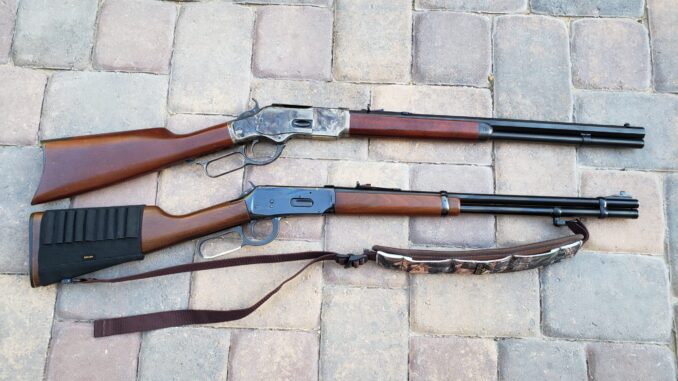
The lever-action rifle is an American classic. No other nation in the world has a love affair with lever guns like the United States. Despite their popularity waning in favor of bolt-actions and semi-autos, lever actions remain a staple in American gun safes and the hands of hunters across the nation. A quick look to history shows us that these guns are for more than just the deer stand. For decades they stood ready to guard the homestead from predators both two and four-legged.
While times have changed, their capabilities have not. If you find yourself looking to a lever action for home defense, here are some things to consider.
Why Choose a Lever Action for Defense
There are a handful of reasons why someone may rely upon a lever action rifle for personal protection. Maybe that’s what you already own, and you don’t plan on changing that anytime soon. In a world of increasing costs, dropping hundreds of dollars on a new gun isn’t realistic for many people. Perhaps you find yourself in an incredibly restrictive jurisdiction in the US or abroad where semiautomatic firearms are difficult to get. Even then, the social fallout and legal witch hunt that follows a shooting with an AR may be too much for you. A simple lever gun likely won’t get the same scrutiny as the latest black gun.
Those who are mobile may want something more permissive to suit their travels. Much like the pump-action shotgun, the lever-action rifle is typically 50-state legal. The ability to freely move across the nation could be a decision point for those frequently on the move.
Ammunition Selection
When looking at lever action rifles, many people start by choosing a caliber. We have both rifle and pistol chamberings to choose from, but which is best? That question won’t be answered here, but we can narrow down our choices a little bit.
Rifle Calibers
Rifles are more effective at stopping threats than pistols, I don’t think that’s a controversial statement. However, not all rifle rounds are a good choice here, in my opinion. We have things like .360 Buckhammer, .35 Remington, and .45-70Gov’t. While some of those have storied histories stopping bad guys and taking person-sized game, they wouldn’t be my recommendation. From excessive recoil and penetration, to incredible cost per round, and lack of availability, none of these are easy to swallow.
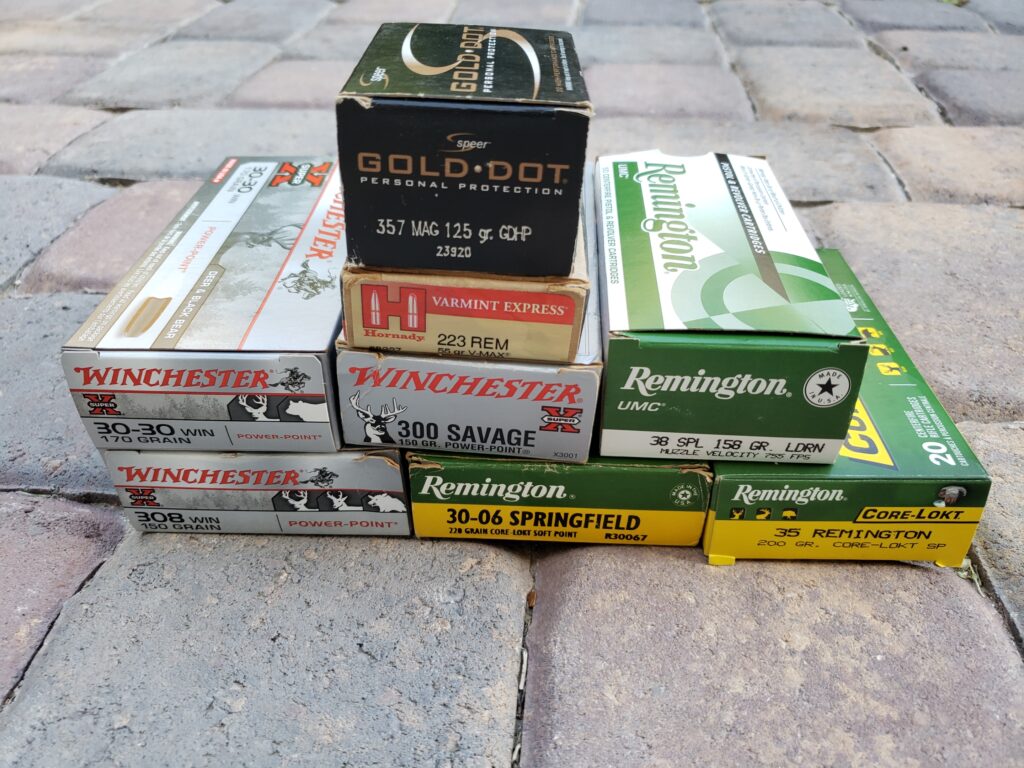
Instead I’d stick with tradition here. The .30-30WIN will be more common, more affordable, and plenty capable without going overboard. There’s a reason why it was America’s most popular deer cartridge for nearly a century. We have a variety of high quality firearms, new and used, available in it to choose from as well. From Henry, to Marlin, Rossi, Smith & Wesson, and more, the sky is the limit.
A few companies like Browning, Winchester, and Henry also make lever rifles in more modern cartridges. The Long Ranger, and BLR are offered in .223REM, .308WIN, .243WIN, and more. Those are capable rounds, but the guns are a niche within a niche. If you have one already, don’t abandon it, but they wouldn’t be my recommendation for this purpose.
Pistol Calibers
Pistol calibers are surprisingly popular with lever action rifles. Part of their success stems from memories of the Old West, your rifle and revolver sharing ammunition. The ability to swap between Special and Magnum loads also helps balance performance with cost for some rounds. Any discussion about the type must include pistol calibers, but what rounds should be consider?
The big three here are .38 Special/.357 Magnum, .44 Special/Magnum, and .45 Colt. Sure, we can choose .500S&W or .454Casull, but we’re not considering those for the same reasons we avoid .360Buckhammer. Some manufacturers also support .22LR and .22WMR in lever actions, but we’re tabling those for this discussion. There are also modern lever guns that accept detachable magazines in 9mm. Those are not up for consideration here.
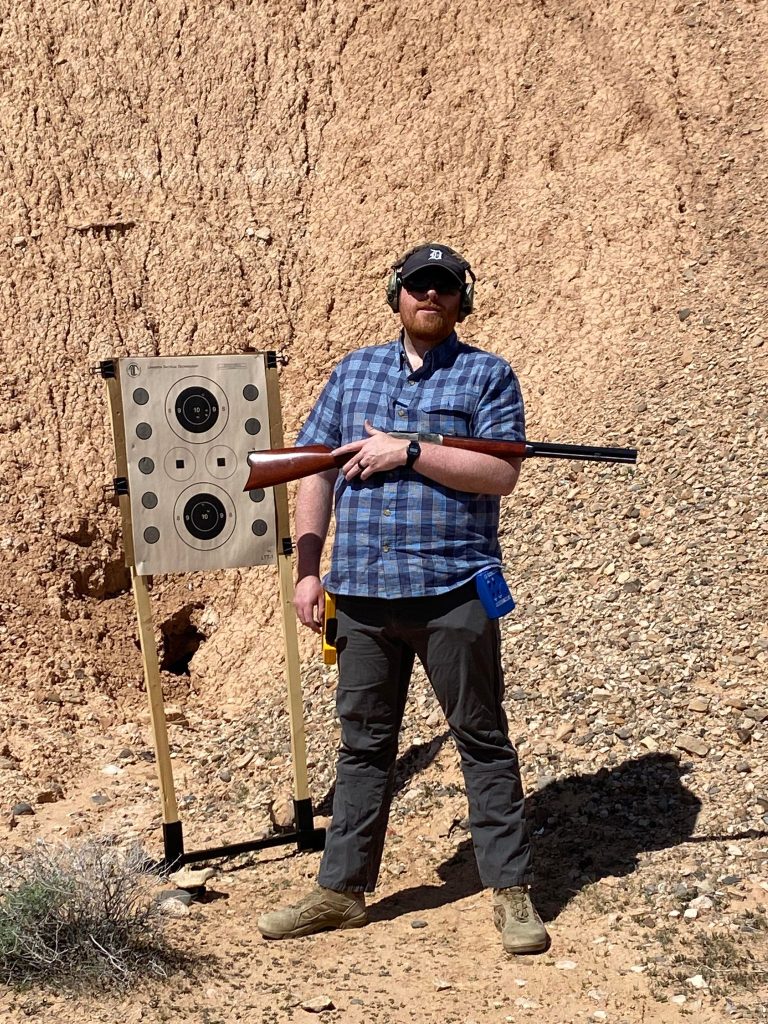
My preference here is the .357 Magnum carbine, and my reasons are simple. Ammunition costs are low, recoil is nearly non-existent, capacity is slightly higher, and ammunition is widely available. The big bore rounds do just fine, but they’re harder to keep around for regular practice, and that’s a deal killer for me.
The Guns
For this test I wanted to use guns that were representational of what people may already own or could purchase easily. Additionally, I didn’t want to stick to a single caliber or action. Luckily, I already have two lever guns in my arsenal, both of which I find representational.
Uberti 1873
The Uberti 1873 is a reproduction of the Winchester 1873, “The gun that won the West”. Mine is chambered for .357 Magnum, and features a 10 round magazine under a 20-inch barrel. Sights are semi-buckhorn with a black blade front post. Despite being a PCC, this gun weighs a little over 8 pounds empty, making it fairly hefty. This was my Cowboy Action rifle during a brief stint a few years ago, and also briefly served in a home defense role for my wife. This is a new production gun, with Uberti offering a variety of rifles in multiple configurations.
Winchester 1894
I picked up my used Winchester 94 several years ago from a local shop for a decent price. Chambered in .30-30, we have an intermediate rifle cartridge, somewhat comparable to 7.62×39. The 20-inch barrel gives us seven rounds in the tubular magazine. Sights are notch and post, with the rear having much less of a buckhorn than the Uberti. Coming in at only 6.5 pounds, the Winchester 94 is a handy rifle, despite its relative power. Winchester currently makes new models of these, but typically you’ll find them used.
Test Parameters with Lever Action Rifles for the Modern Home Defense
There are significant differences between a rifle and a shotgun. That said, there are a fair number of similarities between the pump-action shotgun and lever-action rifle. Both are limited in capacity, typically holding somewhere between 4 and 10 rounds depending on chambering and barrel length. We’re usually dealing with tubular magazines, both of which are commonly loaded one round at a time through a loading port. Regarding pumps and levers, users must manually cycle the action between shots to eject spent casings and load fresh rounds.
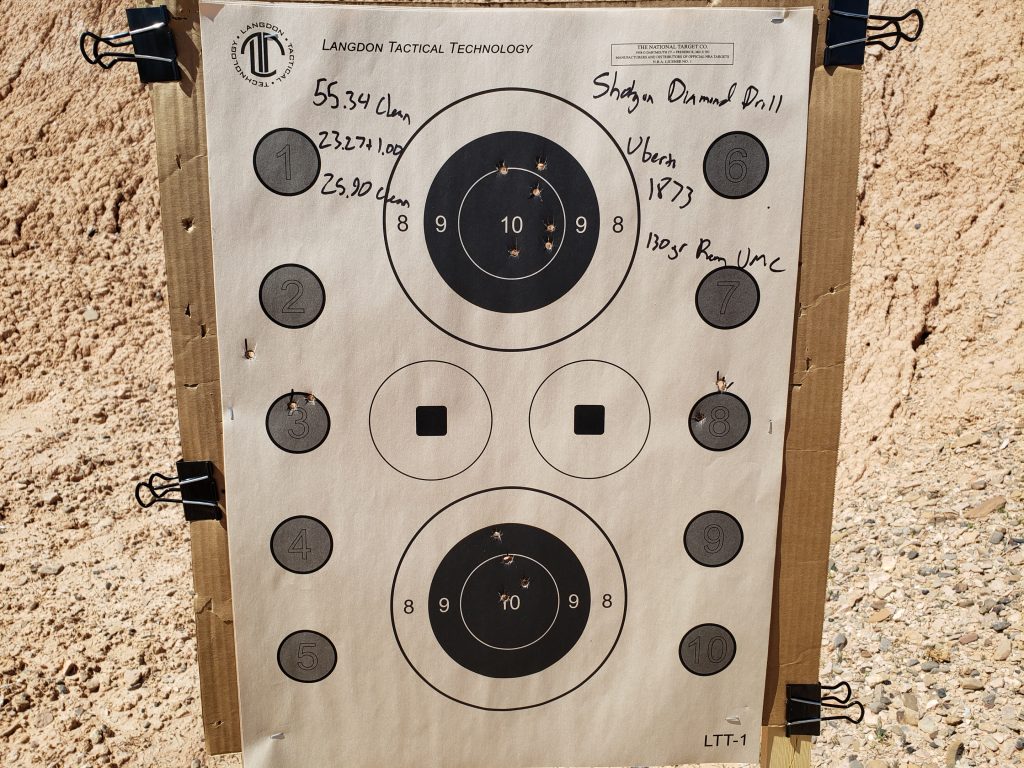
With these similarities in mind, I opted to use some shotgun-centric drills and courses of fire to measure performance with our lever action rifles.
Reedy Practical Shotgun Skills Test
I wrote this test as a comprehensive test of skills that you may employ at home defense distances. Ranging from 3 to 25 yards, shooters will work relative precision, along with recoil control, and action manipulation. Requiring only 10 rounds, this is something that can be run multiple times with a single box of pistol or rifle ammunition. Here is a quick rundown of the Reedy Practical Shotgun Skills Test
- Stage 1) 25 yards
- Fire 1x round. Par time is 2.5/1.5/1 seconds
- Stage 2) 15 Yards
- Fire 1x round. Par time is 1.75/1.25/0.75 seconds
- Stage 3) 10 Yards
- Fire 2x rounds. Par time is 3/2/1 seconds
- Stage 4) 7 Yards
- Fire 1x round. Par time is 1.5, 1.0, 0.5 seconds
- Stage 5) 5 Yards
- Shotgun in cruiser ready condition, with 3 rounds in the magazine. Start position is low ready. Cycle action and fire 3x rounds. Par time is 5/4/3 seconds
- Stage 6) 3 Yards
- Shotgun chambered, held compressed in short stock or armpit tuck position. Fire 1x round at body while compressed, take one step laterally, then fire 1x round at head from shouldered position. Par time is 3.5/2.5/1.5 seconds.
You can read the full course of fire >>HERE<<
Reedy Shotgun Diamond Drill
This drill is a little more simple than the previous course of fire. Everything is fired from a single distance, making it more friendly for some facilities. Despite this, changes in target size act as simulated distance or partial exposure targets. Reloads are incorporated here, helping to test your ammunition carriage, loading technique, and any challenges the gun presents while topping off on the clock. Here is a quick rundown of the Reedy Shotgun Diamond Drill:
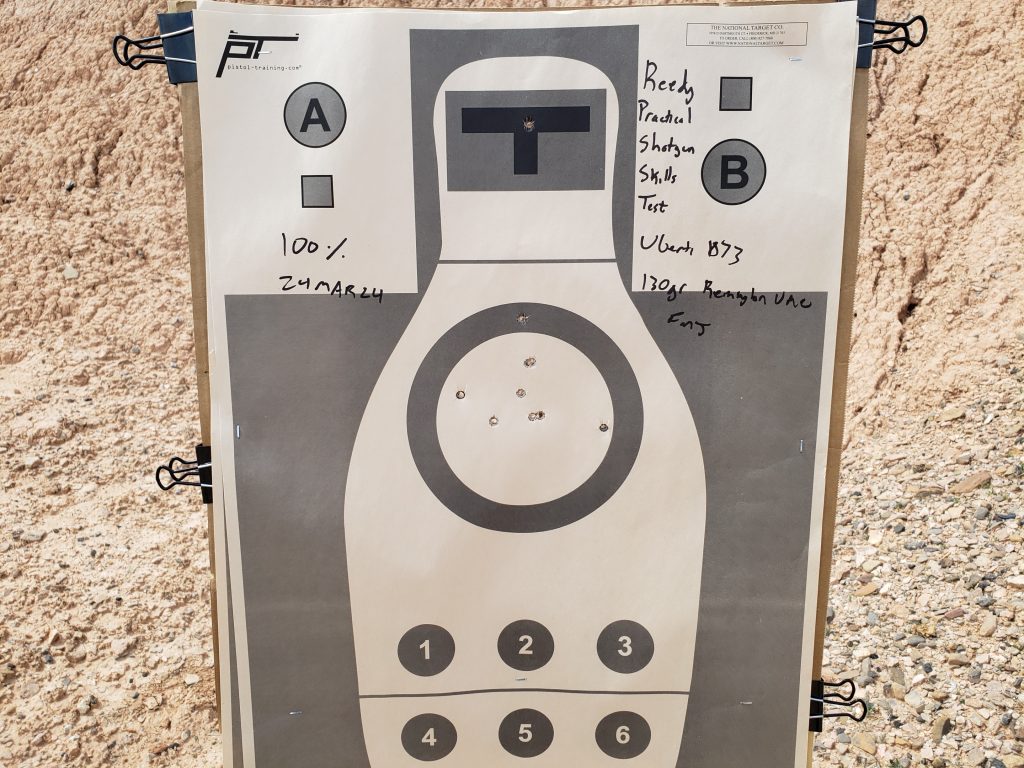
The start position is low ready, with your muzzle at the base of the target, facing down range. On the beep, fire 2x buckshot into the top B8. Next, port load a single slug, then fire into the “3” circle on the left of the target. Port load a single round of buckshot, then load a second round of buck into the tube, and fire both into the lower B8. Finally, port load a single slug and fire it into the “8” circle on the right side of the target. All rounds are fired as a single string without stopping.
Full details of the drill can be found >>HERE<<
Test Results
Overall, the Uberti 1873 and Winchester 1894 ran neck and neck. Each came away with some pros and cons against each other, though that isn’t the focus of this piece. That said, running your guns a little harder will help you to see theirs strengths and weaknesses. These may not show their faces during more casual range time, so it’s important to get familiar with them before an emergency.
Both guns performed excellently in my Practical Shotgun Skills Test. Each brought in a perfect score, with times in the “Intermediate” and “Advanced” brackets throughout the test. Of course lower recoil certainly helps their case here, and more follow-up shots may be required versus buckshot. However, I’m pleased with their performance.

Times were surprisingly slow on the Shotgun Diamond Drill. Both guns were well past the “Novice” par time, coming almost purely from the two reloads on the clock. Contributing factors here are less efficient loading devices; my 1873 reloads came from a Galco 2x2x2, and the 1894 from an elastic butt cuff. Additionally, less familiarity with quickly topping off the loading gate slowed things a bit. However, my hits were still good, with a couple of slight misses on the 2-inch circles that would’ve been good with slugs. This is a skill that I need to work on to bring things up to snuff.
Some Observations
The 1873 is well regarded in Cowboy Action Shooting for its slick action and relatively short throw of the lever. That allows for a little faster shooting, especially when paired with a light recoiling round like .38 Special. However, the curved butt plate gave me some issues with mounting the gun at speed, and the pointed toe of the stock didn’t help either. This led to some errors with stock placement, and a little discomfort as well.
On the positive side, the gun has virtually zero recoil with the selected load, and is fairly quiet on top of that. Unprotected ears will be happier if things go bump in the night. Additionally, I was able to load the 1873 a little faster and more easily thanks to some differences in the loading gate.
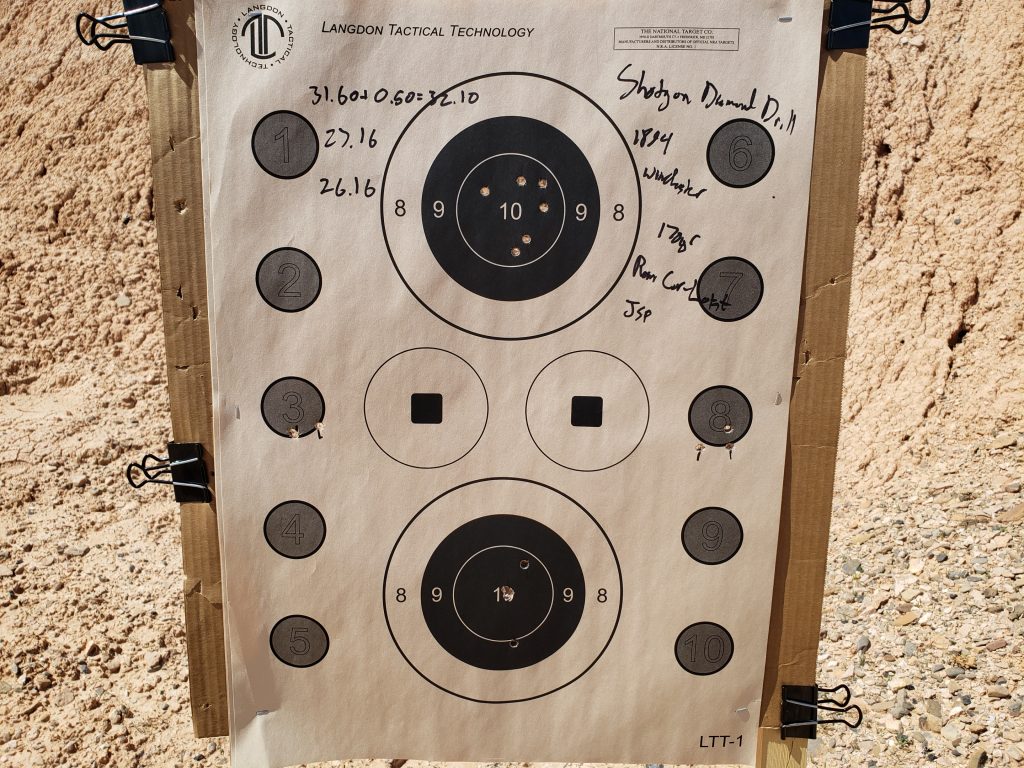
Regarding the 1894, I once failed to cycle the action far enough to feed a round, requiring another cycle of the lever. I suspect this is due to shooting the 94 after the 73, which has a shorter throw. However, that is something to be aware of, as the 1894 Winchester certainly has a longer throw than some other guns. Sights on the Winchester are a little slower, but provided slightly better hits. I prefer the sight picture here, giving me more confidence in my shots at only a slight cost of speed.
Final Thoughts on Lever Action Rifles for the Modern Home Defense
Overall, I would be confident putting my life in the hands of a lever-action rifle, just as many Americans before me. Both of these guns put up solid performances on the clock, and offer reasonable firepower in terms of caliber and capacity. Their low-profile appearance should be friendlier in increasingly uncertain times, and allow them to travel to places that more modern options cannot.
Are these ideal choices for personal protection? Certainly not, but they still hold their own, just as did on the Frontier and beyond.
Support My Work
If you made it this far, thanks for reading! Writing isn’t my full-time profession, and nearly everything I do comes out of my own pocket. Between ammunition, tuition, range fees and more, expenses add up fast. If you like what I have to offer, consider making a donation to my Patreon.
Every bit helps bring more work like this to you, and contributes to shortened timelines or more in-depth work on my part. You’ll also have more direct access to me, offering suggestions for future projects, looking behind the scenes, and getting early access to some content. You can find my Patreon >>HERE<<





1 Trackback / Pingback